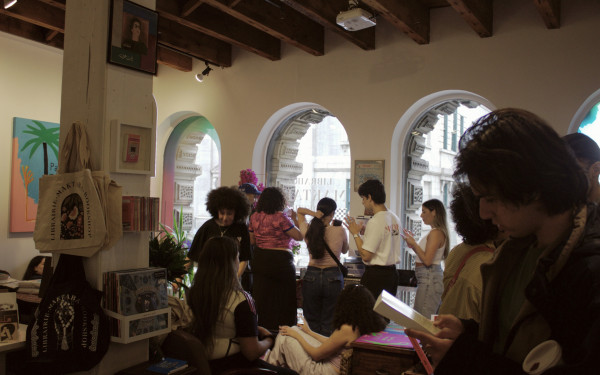Creating Art with DNA
Artist Heather Dewey-Hagborg Collects DNA Traces Found in Public Spaces as Inspiration for Her Sculptures
What began as exposing a tiny hair trapped in an artwork’s display case shifted into an artist collecting bits of DNA around the city and creating sculptural portraits of individuals who had left their traces behind in public spaces.
These strangers don’t know they happen to be the muses of artist and science enthusiast Heather Dewey-Hagborg.
She was sitting in a therapy session when a kitsch painting on the wall caught her attention. Looking closer, she noticed a single hair caught behind the glass frame. She was filled with questions that needed answers.
“My projects generally begin with a question [that is] philosophical, scientific, political and theoretical,” Dewey-Hagborg told The Link.
“These questions become a fascination, which eventually turn into an obsession, and the artistic product is a document of this process of engagement with the materials, theories and history.”
This process of questioning an idea is what inspired the artist after seeing the trapped hair.
“As I walked down the street [to go home], I just kept thinking about that hair and thinking about whose hair it could be, what they might look like and what they might do,” Dewey-Hagborg said in a TED Talk video.
This one strand of hair would become the inspiration for Stranger Visions, a collection of 3D-printed faces made from DNA samples collected around Brooklyn, where Dewey-Hagborg lives.
The title of her collection is a play on words—the sculptures are the faces of strangers, while the art created is eerie and uncanny.
Dewey-Hagborg will also give a lecture and workshop about her art, with the hopes of sparking a philosophical debate on DNA collection and use.
“I hoped, by producing realistic sculptures of anonymous people using clues from their DNA, to spark a debate about the use or potential misuse of DNA profiling, privacy and genetic surveillance,” she said.
The artist started her artistic process by collecting everything from hair and cigarette butts to chewing gum. She then took them to a lab to analyze the traces of DNA they bore, eventually turning that information into portraits. This process also made her think about the forensic culture currently dominating the media.
“I kept thinking about all these forensic shows that we watch on TV and the fascination that we have with that science of trying to figure out from evidence who was there,” she said in her TED video.
While collecting samples of DNA from crime scenes has been a useful tactic in forensics to discover persons of interest, Dewey-Hagborg wanted to show that there are no present guidelines or laws surrounding the collection and use of one’s leftover traces of DNA.“I was really struck by this idea that the very things that make us human—hair, skin, saliva and fingernails—become a real liability for us as we constantly shed them in public. Anyone could come along and [use] them for information,” she said.
The artist’s process of collecting samples is not always as easy as taking a leisurely stroll through the city to spot the best-looking materials that contain genetic traces.
“Sometimes I am working under a deadline and have to take whatever I can get in a short time,” Dewey-Hagborg said.
After having completed a bachelor of arts and master’s degree, the artist is currently working on her PhD in electronic arts while she teaches as an assistant professor at the School of the Art Institute of Chicago.
“I engage in art as trans-disciplinary research—a means of exploration to probe the deep and often hidden structure of media, technology and science that dominate the contemporary moment and frame our cultural imagination,” Dewey-Hagborg said.
What distinguishes her from other artists is her profound interest in many diverse fields.
“I’ve been working at the intersection of art and science, with an emphasis on conceptions of the natural and the artificial, drawing from diverse practices including sound, sculpture, biology and computation,” she said.
Dewey-Hagborg is also hoping to expand her repertoire with a dissertation.
“My dissertation is about ‘reading DNA,’ which talks about how we invest meaning into the chemical molecules. I’m looking at interpretation, identity and new forms of surveillance, all driven by my artwork collection Stranger Visions,” she said.
Stranger Visions // Oct. 11 // Studio XX (4001 Berri St.) // Artist’s presentation at 3 p.m. // Suggested donation $5

1_700_1050_90.jpg)
2_875_1050_90.jpg)
_600_832_s.png)




